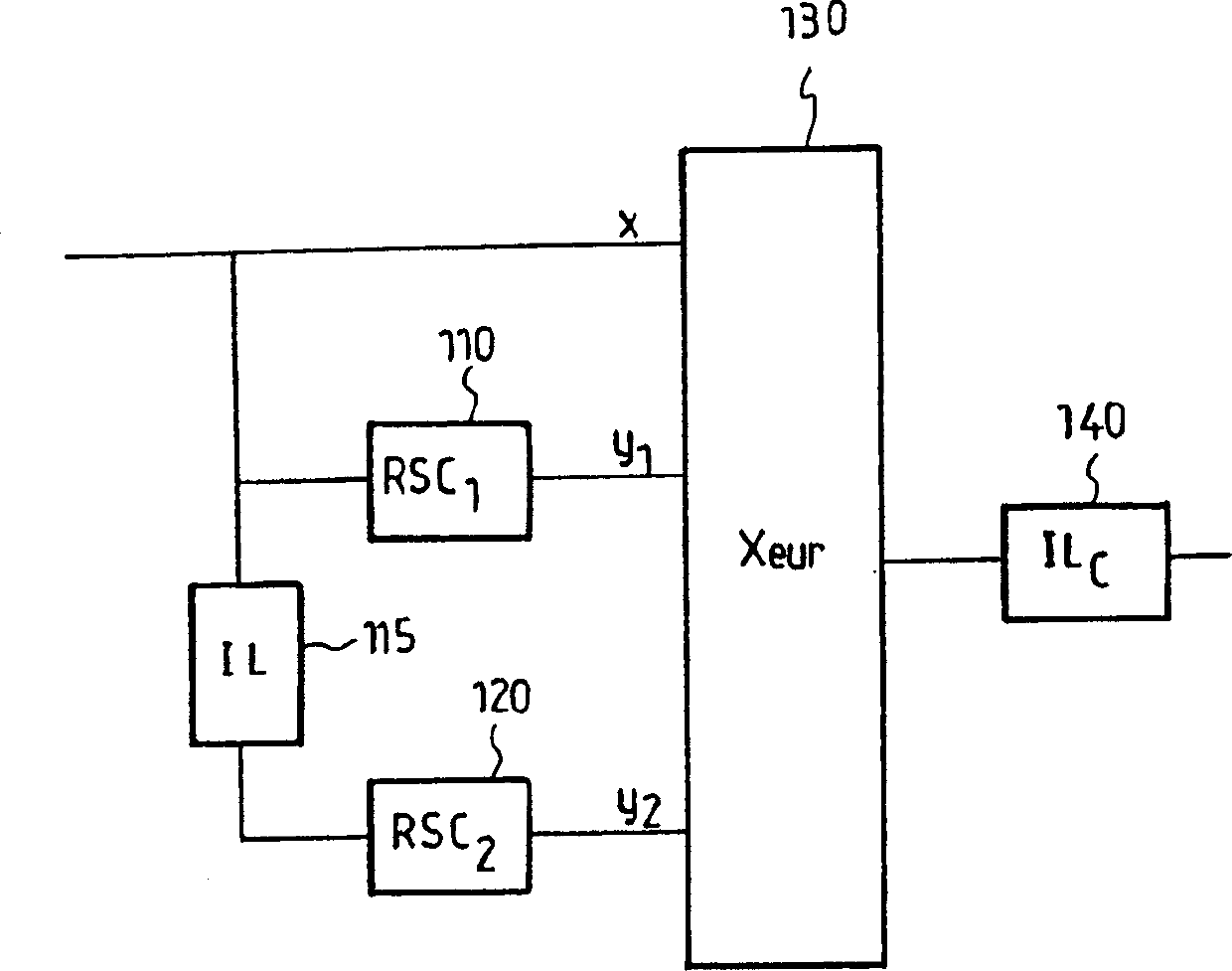Method for optimizing code data-block size under performance constraint condition
A technology for encoding data and optimization, applied in the direction of encoding, encoding components, electrical components, etc., can solve problems such as consumption and performance without deteriorating
- Summary
- Abstract
- Description
- Claims
- Application Information
AI Technical Summary
Problems solved by technology
Method used
Image
Examples
Embodiment Construction
[0039] The general concept based on the invention exploits the fact that in an iterative decoder, for a predetermined number of iterations n iterations , which will be referred to as the set number, the data block can be decoded in its entirety before the final iteration of the plan. For example, if the iteration halting criterion is complete (zero BET, that is, there are no errors at all in the block), then the average number of iterations n iterations Often less than the set number, as in the Figure 4 Seen on This figure shows that for different n iterations , n iterations According to the change of signal-to-noise ratio. It can be seen that for a given number n iterations , the average number of iterations does not reach this value, which is especially the case when the signal-to-noise ratio is high. Naturally, in practice, there is no perfect stopping criterion: such as passing the CRC test to the absence of errors, and stopping the iteration once the CRC no longer ...
PUM
 Login to View More
Login to View More Abstract
Description
Claims
Application Information
 Login to View More
Login to View More - R&D
- Intellectual Property
- Life Sciences
- Materials
- Tech Scout
- Unparalleled Data Quality
- Higher Quality Content
- 60% Fewer Hallucinations
Browse by: Latest US Patents, China's latest patents, Technical Efficacy Thesaurus, Application Domain, Technology Topic, Popular Technical Reports.
© 2025 PatSnap. All rights reserved.Legal|Privacy policy|Modern Slavery Act Transparency Statement|Sitemap|About US| Contact US: help@patsnap.com



